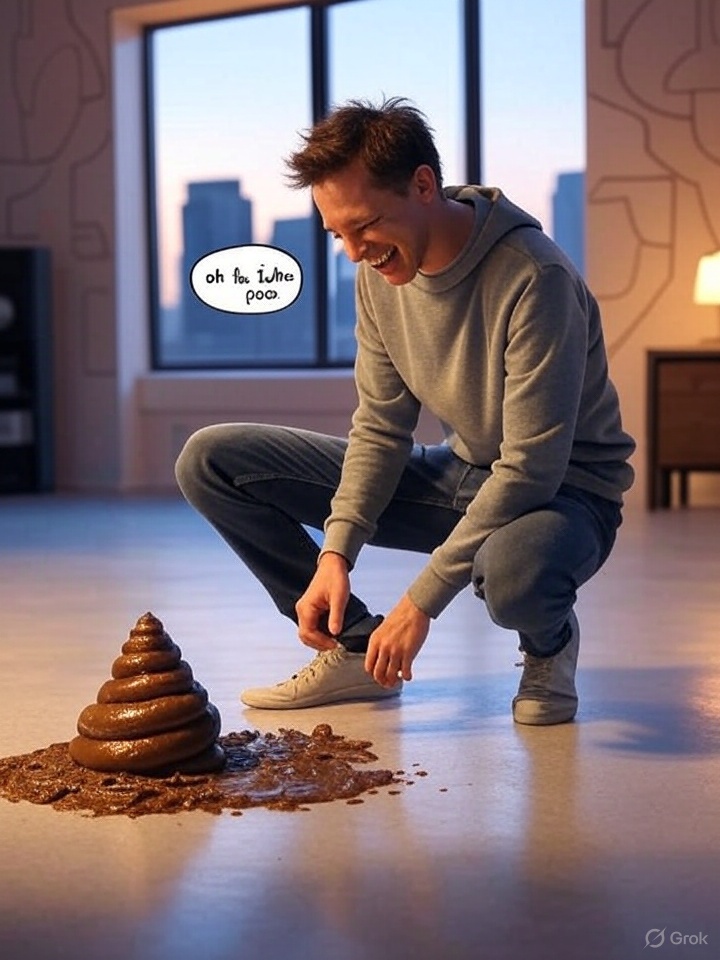A Swedish author has written a reimagining of the classic Asimov book “I Robot”, replacing the robots with New Zealand parrots.
It’s called…
Ikea
Joke Poo: Culinary Catastrophe
In culinary news:
A French chef has written a reimagining of the classic Escoffier cookbook "Le Guide Culinaire," replacing all the traditional French ingredients with… crickets.
It’s called…
"Le Criquet Culinaire."
Alright, let’s disassemble this joke.
Joke Dissection:
- Core Concept: The humor lies in the unexpected pun. It leverages the similarity between "I, Robot" (Isaac Asimov’s famous science fiction book) and "Ikea" (the Swedish furniture company).
- Setup: The setup cleverly builds anticipation. It establishes a literary context (Swedish author, Asimov book) and introduces a quirky reimagining (robots replaced by New Zealand parrots). This makes the audience expect some kind of science-fiction twist or commentary.
- Punchline: The punchline, "Ikea," is the surprise payoff. It relies on the audience making the connection between the parrots (implying assembly) and the flat-pack furniture giant.
- Humor Type: This is primarily pun-based humor, with elements of absurdity and a touch of social commentary on Ikea’s reputation for requiring self-assembly.
Key Elements:
- Isaac Asimov’s "I, Robot": A cornerstone of science fiction, known for its Three Laws of Robotics.
- Robots: Symbolic of technology, automation, and precision.
- New Zealand Parrots (Specifically, Kakapo or Kea): Associated with intelligence, sometimes mischievous behavior, and beautiful plumage.
- Ikea: Swedish furniture company, famous for its flat-pack furniture and self-assembly requirements.
- Sweden: Location of Ikea Headquarters and the setting for the author.
Comedic Enrichment – Witty Observation/New Joke:
Okay, here’s a witty observation built from these elements:
"You know, if Asimov had foreseen the rise of flat-pack furniture, the Fourth Law of Robotics would have been: ‘A robot must assemble particleboard constructs while silently questioning its existence, and simultaneously search for a missing Allen wrench.’"
Explanation:
- Builds on Asimov: It directly references the Three Laws of Robotics (implied), anchoring the humor in the original literary work.
- Connects Elements: It bridges the gap between robots, assembly, and the Ikea experience.
- Absurdist Humor: It layers on absurdist humor by highlighting the common frustrations of assembling Ikea furniture.
- Relatability: It taps into a shared experience (the annoyance of Ikea assembly) making the humor relatable and resonant.
- Slight Twist: It’s a witty observation, and not a joke that is setting up a pun. It’s just a thought based on the joke that already exists.
Alternative New Joke:
"Why did the Swedish author use New Zealand parrots instead of robots in his ‘Ikea’ reimagining? Because the parrots kept demanding better instructions. Turns out the robots were perfectly happy with the picture diagrams, but the parrots kept saying, ‘These instructions are fowl!’"
Explanation:
- Answer to the set up: By answering the question of why it was parrots and not robots, it gives it a feeling of being a true joke.
- Uses the key elements: Touches on Sweden, New Zealand Parrots, and the Ikea instructions.
- Pun: "Fowl" is both bird-related and suggesting that the instructions are very bad.
Hopefully, one of these hits the mark!


